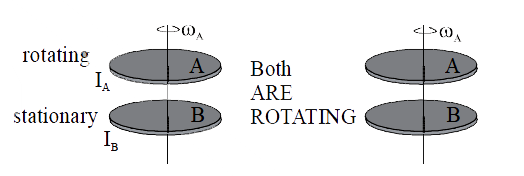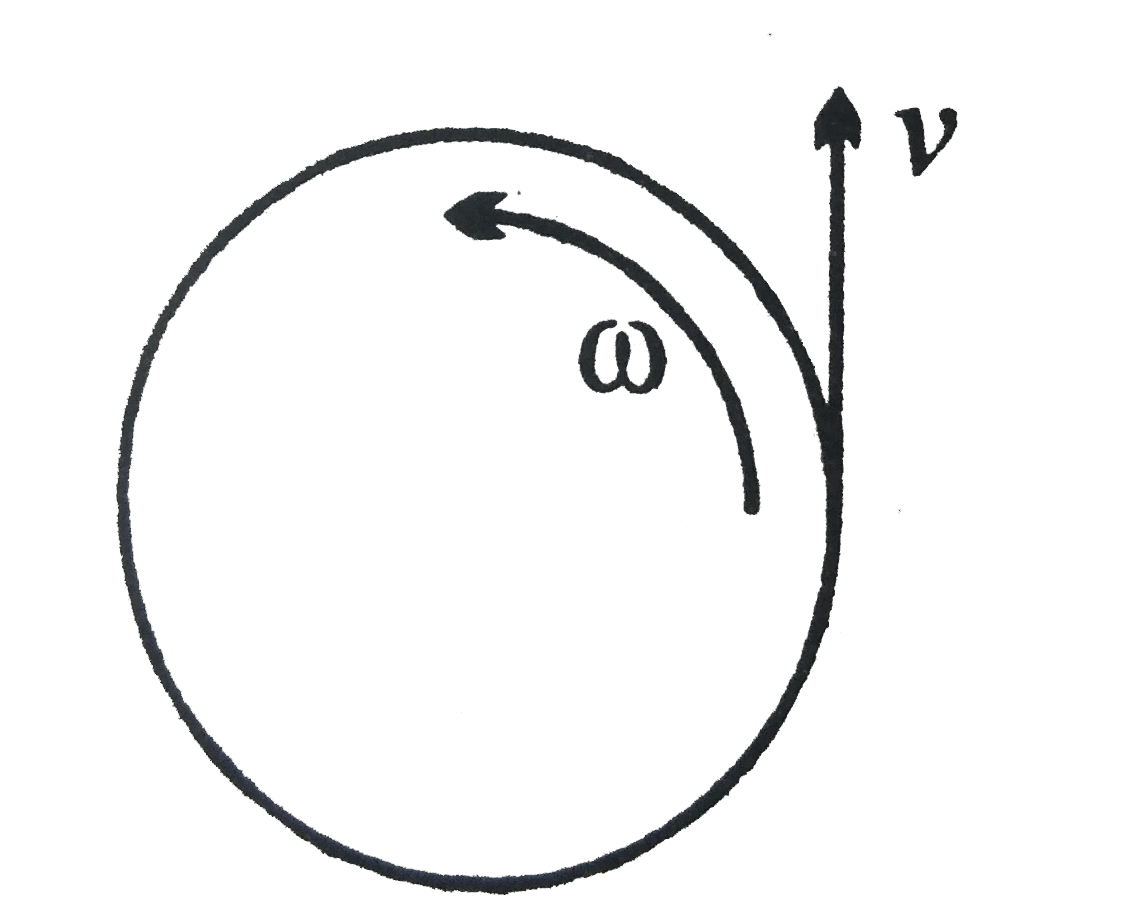The angular momentum of a body with mass (m) moment of inertia (I) and angular velocity (ω) rad/s is equal to
Iω
Iω2
Iω
1ω2
The correct Answer is:a
Step by step video, text & image solution for The angular momentum of a body with mass (m) moment of inertia (I) and angular velocity (omega)" rad"//s is equal to by Physics experts to help you in doubts & scoring excellent marks in Class 12 exams.
Topper's Solved these Questions
Similar Questions
Angular momentum of a rigid body rotating about a fixed Axis with angular velocity →ω
View SolutionTwo wheels A and B are placed coaxially. A has moment of inertia IA and angular velocity ωA while B is stationary. On clubbing them a clutch they move jointly by an angular velcoity 'ω' then find the M.I of 'B'
 View Solution
View Solution
Knowledge Check
- Question 1 - Select One
The relation between the torque τ and angular momentum L of a body of moment of inertia I rotating with angular velocity ω is
Aτ=dL/dtBτ=L.ωCτ=dL/dωDτ=L×ω - Question 2 - Select One
Thye angular momentum and the moment of inertia are respectively
Avector and tensor quantitiesBscalar and vector quantitiesCvector and vector quantitiesDscalar and scalar quantities - Question 3 - Select One
A uniform circular disc of radius R is rotating about its own axis with moment of inertia I at an angular velocity ω if a denser particle of mass m is gently attached to the rim of disc than its angular velocity is
AωBIω(I+mR)CI+mR2IωDIωI+mR2
The moment of inertia (I) and the angular momentum (L) are related by the expression
View SolutionTwo disks are rotating about the same axis. Disk A has a moment of inertia of 3.4kg−m2 and an angular velocity of +72rad/s. Disk B is rotating with an angular velocity of −9.8rad/s. The two disks are then linked together without the aid of any external torques, so that they rotate as a single unit with an angular velocity of −2.4rad/s. The axis of rotation for this unit is the same as that for the separate disks. What is the moment of inertia of disk B?
View SolutionA child with mass m is standing at the edge of a disc with moment of inertia I, radius Rm and initial angular velocity ω. See figure given below. The chlid jumps off the edge of the disc with tangential velocity v with respect to the ground. The new angular velocity of the disc is.
 .View Solution
.View SolutionThe rotational kinetic energy of a body is E and its moment of inertia is I. The angular momentum is
View SolutionA round disc of moment of inertia I2 about its axis perpendicular to its plane and passing through its centre is placed over another disc of moment of inertia I1 rotating with an angular velocity ω about the same axis. The final angular velocity of the combination of discs is.
View Solution

